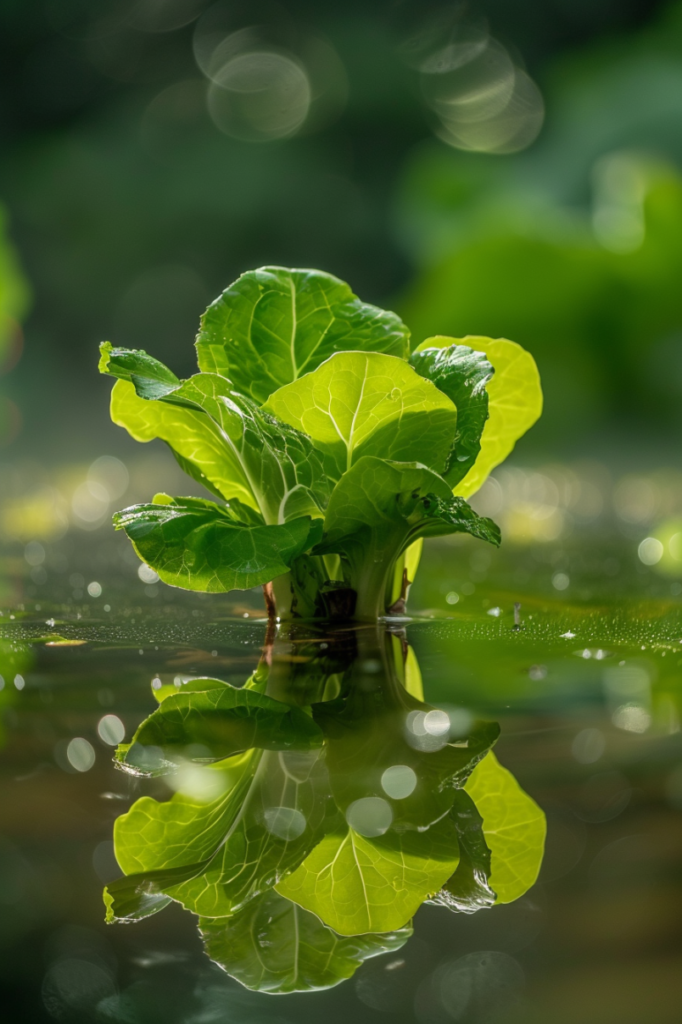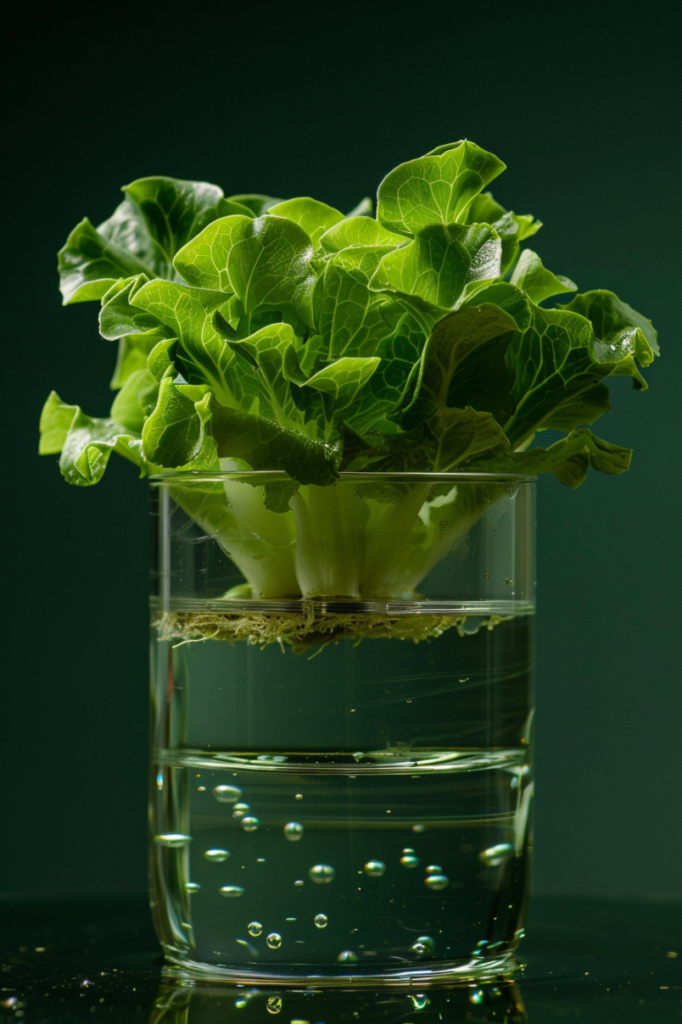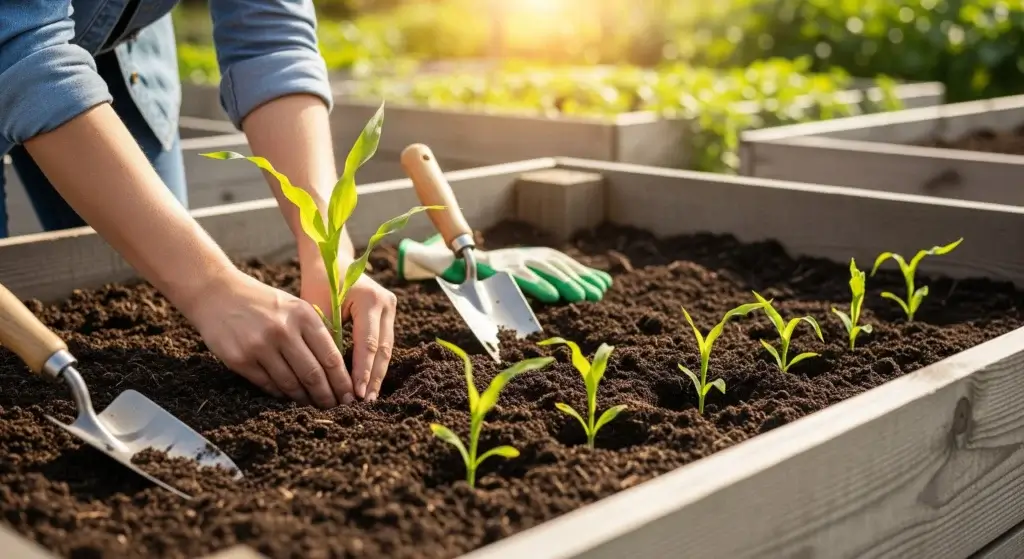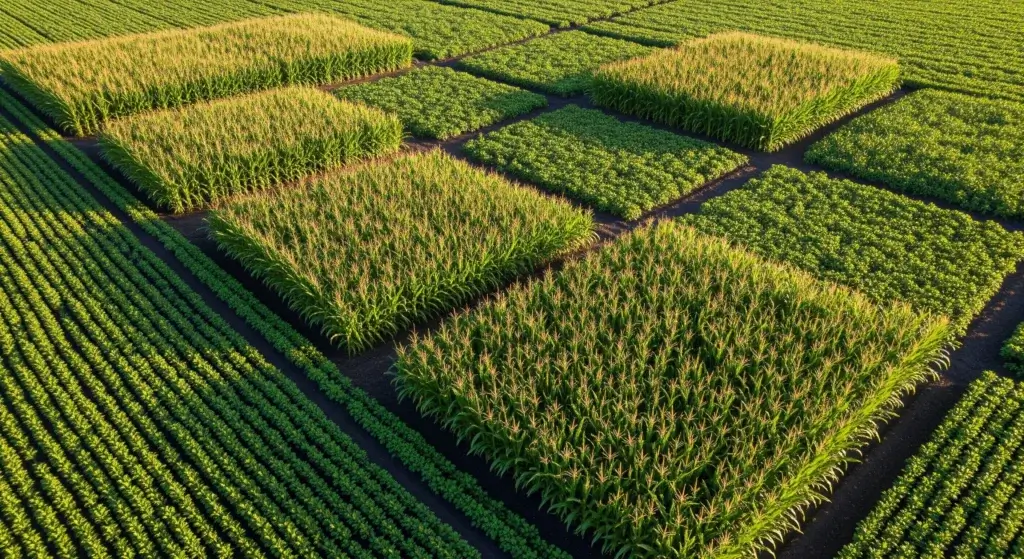
In this guide, we’ll explore the step-by-step process of growing lettuce in water.
Growing lettuce in water is an innovative and eco-friendly way to cultivate fresh greens right in your kitchen.
This method is an educational experience for gardeners of all ages, saves space, ensures you have a constant supply of healthy, and pesticide-free lettuce.
In this blog post, we’ll walk you through everything you need to know to successfully grow lettuce in water, from setup to harvest.
Characteristics of Hydroponic Plants
Hydroponic plants, though looking similar to their soil-grown counterparts, have some distinct characteristics due to the way they’re cultivated:
Root system
Since water and nutrients are delivered directly, hydroponic plants develop less extensive root systems compared to soil-grown plants.
The roots prioritize functions like nutrient uptake and anchoring, rather than searching for water in the soil.
- Read also: Aquaponics 101: DIY Aquaponics System For Vegetable
- Read also: The Beginner’s Guide: Build DIY Hydroponic Vegetable Garden
Nutrient delivery
Plants absorb essential nutrients through water, which means nutrients are delivered in a dissolved form.
This approach allows for a more accurate and controlled way to ensure plants get the right amount of nutrients.
It is more efficient than depending on the natural breakdown of organic matter in the soil to release nutrients.
Growth rate
Hydroponic plants often grow quicker than those in soil.
This happens because they are given the best possible conditions and a steady supply of nutrients.
Hydroponics creates an ideal environment, ensuring plants receive everything they need to thrive without depending on the natural processes in soil.
Environmental control
Hydroponic systems often require closer monitoring and control of environmental factors like light, temperature, and humidity to maintain optimal growth conditions.
Susceptibility to disease
In a closed system, pathogens can spread more easily.
Strict hygiene practices are crucial in hydroponics.
Water usage
Hydroponic systems can be designed to be water-efficient, as water is captured and recirculated, minimizing waste.

Can I Grow Lettuce in Water and Then Plant It in Soil?
Yes, you can start lettuce in water and then transfer it to soil if you prefer.
This method is especially useful if you want to give your plants a head starts before moving them to a garden or a larger container.
It’s important to note that lettuce grown solely in water may not yield enough leaves for a full salad.
However, transferring it to soil will enhance its growth potential and nutritional value, making it a worthwhile endeavor for home gardeners.
Growing Lettuce in Water: Hydroponics
Hydroponic gardening is a method of growing plants without soil, using mineral nutrient solutions in water.
Here’s a comprehensive guide to setting up your hydroponic lettuce system:
Step 1: Gather materials
You’ll need lettuce seeds or cuttings, containers or jars (preferably transparent), clean distilled or filtered water, a hydroponic nutrient solution, net cups or DIY supports, and grow lights (optional but beneficial for indoor growing).
Step 2: Set up the container
Opt for transparent containers to monitor water levels easily.
Ensure the size is suitable for the number of lettuce plants you plan to grow.
Fill your container with distilled or filtered water.
Mix in the hydroponic nutrient solution according to the manufacturer’s instructions.
Step 3: Support system
Place your lettuce seeds or cuttings in net cups or make DIY supports using foam or mesh to keep them upright and properly spaced.
Step 4: Light source
Place your setup in a location with ample natural light or use grow lights.
Lettuce needs about 12-16 hours of light per day for optimal growth.
Step 5: Planting lettuce
- From seeds: To germinate seeds, place them in a damp paper towel inside a plastic bag. Keep the bag in a warm, dark place until the seeds sprout. Once sprouted, transfer them to your hydroponic system.
- Using cuttings: If you have lettuce cuttings, simply place them in the container, ensuring the cut end is submerged in water. New roots should start to form in a few days.

Aftercare
Light
Ensure your plants receive enough light daily. If using grow lights, keep them on for 12-16 hours each day.
LED grow lights are a popular choice as they are energy-efficient and provide the full spectrum of light that plants need.
Water quality
It’s crucial to change the water and nutrient solution every two weeks.
This prevents the buildup of algae and ensures that your plants are always receiving fresh nutrients.
Check the water level daily and top up as necessary.
Ensure that the water is at room temperature to avoid shocking the plants.
Temperature
Keep the temperature between 60-70°F (15-21°C). Lettuce prefers cooler environments.
Maintain a consistent temperature between 60-70°F (15-21°C).
Lettuce and other cool-weather crops thrive in these conditions.
Sudden changes in temperature can stress plants. Keep your growing area away from drafts, heat sources, and cold spots.
Monitoring growth
Inspect your plants every day for pests or diseases.
Spotting problems early is crucial to stopping them from spreading.
If you find pests, try organic methods like neem oil or insecticidal soap.
Quickly remove any sick leaves to keep diseases from spreading.
Regular pruning helps by cutting away dead or damaged leaves, which promotes healthy growth and better air circulation.

- Read also: The Ultimate Guide to Growing Lettuce in Containers
- Read also: Different Lettuce Types: Everything You Need to Know
Conclusion
Growing lettuce in water is a rewarding and efficient way to enjoy fresh greens year-round.
With the right setup and a little care, you can have a continuous supply of healthy, delicious lettuce.
Whether you’re a seasoned gardener or a beginner, hydroponics offers a fun and sustainable method to grow your own food.
FAQs
Lettuce typically takes about 4-6 weeks to reach maturity in a hydroponic system.
It’s best to use distilled or filtered water to avoid chemicals that can harm your plants.
Yes, a hydroponic nutrient solution is necessary to provide the essential minerals your plants need to grow.
While natural sunlight is ideal, you can use grow lights to provide the necessary light for your plants.
Use opaque containers or cover transparent ones to block excess light and change the water regularly.



